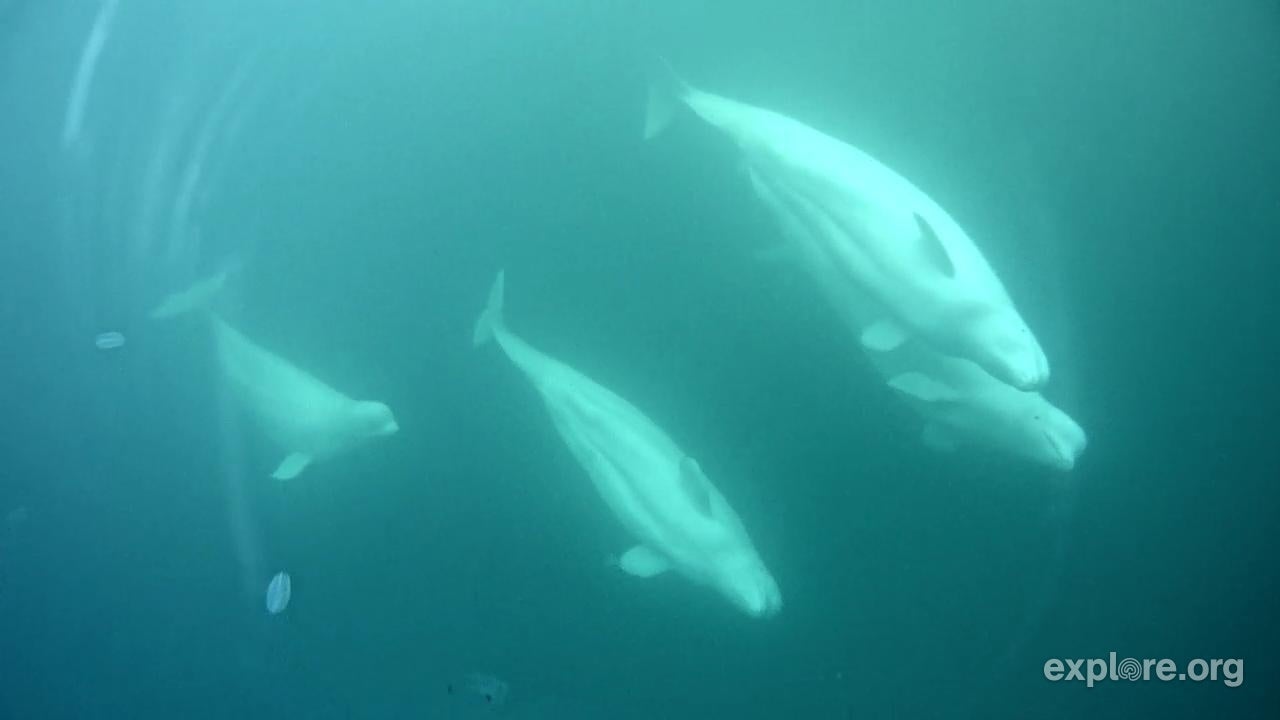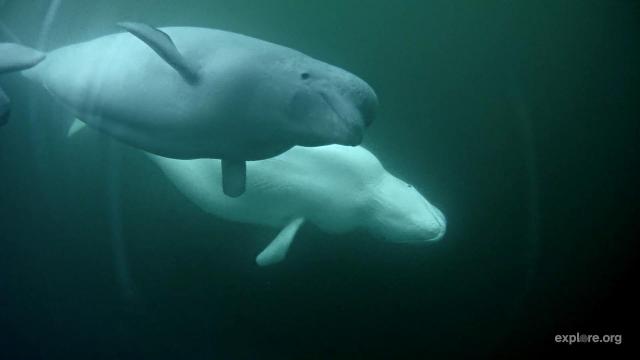Beluga cam is back, baby. That means you can once again catch a glimpse of the estimated 57,000 Beluga whales that migrate from the Arctic to the warmer waters of Manitoba’s Churchill River every summer. You can check it out here, and you should do so right now.
Two conservation organisations, Polar Bears International and Explore.org, just officially launched the live Beluga feed for the eighth consecutive year. It’s broadcasting from the Hudson Bay in the Arctic lowlands. It will be up until the first or second week of September, after which the whales will head north.
If you’re a bear cam fan (and really, who isn’t?), then beluga cam is definitely your jam. On it, you can see dozens of Belugas playing and floating through the water, which is absolutely captivating. I’m pretty sure I caught one swimming backward earlier, which is apparently a thing that belugas do.
The feed flips between two cameras, one above the water’s surface and the other beneath it. Both are also outfitted with microphones, which is lowkey the best part. Trust me, if you’re lucky enough to catch the feed while the whales are being loud, you’ll see why. Belugas are some of the most vocal whales on the planet, and their squeaks and squeals are truly a delight.
“They’re the most chatty animals I think I’ve ever heard. It’s incredible,” Alysa McCall, director of conservation outreach and staff scientist at Polar Bears International, said on a Zoom call. “I think people really fall in love with the Belugas when they hear them.”
Strong agree.
The whales are the main event, but while you’re watching the cam, keep an eye out for special visitors: jellyfish glowing brightly in the dark waters. This past spring, during a citizen science collaboration between Assiniboine Park Conservancy, explore.org, and Polar Bears International, volunteers watched a live feed of the same area identified two species of bioluminescent jellyfish, the melon comb jellyfish (Beroe cucumis) and common northern comb jellyfish (Bolinopsis infundibulum). Neither had ever been seen hanging out in the Hudson Bay before.
“We’re not necessarily sure what this means. It could be that it indicates some sort of ecosystem shift, it could just be an anomaly,” said McCall. “We don’t know yet, but it’s exciting.”

While the cam is super fun to watch, it’s also calling attention to a pretty serious situation. The Arctic is warming three times as fast as the global average, and sea ice is retreating as a result.
Arctic sea ice normally covers nearly the entire Arctic Ocean in winter and then shrinks for the rest of the year, usually reaching a minimum in early autumn. But as temperatures have warmed, freeze-ups are coming later and later, and summers are coming earlier and melting more ice more quickly. Soon, we may see summer sea ice disappear completely in some years.
That’s awful news for the Indigenous communities who have lived in the Arctic for thousands of years, many of whom have long depended on stable, predictable sea ice patterns for hunting, travelling, and cultural practices. It’s also bad news for the many creatures that live there, including belugas.
“Arctic sea ice is to the ocean what soil is to a forest. This is not just simply frozen water, it’s actually the base of the food chain,” said McCall. “Sea ice grows algae inside of it in the spring, which is feeding these diatoms and copepods, which feed the fish. Those fish feed the seals, the polar bears, they all eat the fish.”

They also, of course, feed the beluga whales. Scientists are not sure that belugas are capable of adapting their migration cycles to the new, unpredictable ice patterns. A lack of sea ice puts them in danger of hunger due to a lack of prey hanging around. It can also make them more vulnerable to predators since it’s harder for them to hide.
McCall said she hopes the Beluga cam helps show people what we stand to lose if we don’t halt fossil fuel extraction and curb our greenhouse gas emissions to get the climate crisis under control.
“We hope it can draw attention to why this habitat, a habitat that many folks will never get to see in person, is so important,” she said. “We hope by showing people the Belugas, we can help folks to build a love for them, because with this love, maybe, comes an understanding of why we need conservation action.”
